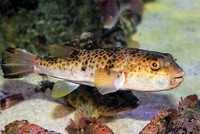Advertisement
Grab your lab coat. Let's get started
Welcome!
Welcome!
Create an account below to get 6 C&EN articles per month, receive newsletters and more - all free.
It seems this is your first time logging in online. Please enter the following information to continue.
As an ACS member you automatically get access to this site. All we need is few more details to create your reading experience.
Not you? Sign in with a different account.
Not you? Sign in with a different account.
ERROR 1
ERROR 1
ERROR 2
ERROR 2
ERROR 2
ERROR 2
ERROR 2
Password and Confirm password must match.
If you have an ACS member number, please enter it here so we can link this account to your membership. (optional)
ERROR 2
ACS values your privacy. By submitting your information, you are gaining access to C&EN and subscribing to our weekly newsletter. We use the information you provide to make your reading experience better, and we will never sell your data to third party members.
Environment
Hawaiian Monk Seals Carry Ciguatoxins
Food Webs: Many members of a critically endangered species of seal bear a heavy body burden of the toxins
by Naomi Lubick
May 26, 2011

In 1978, 50 Hawaiian monk seals died mysteriously. Biologists thought the critically endangered mammals had been poisoned by ciguatoxins, a family of cyclic polyethers made by subtropical marine plankton and gobbled up by herbivorous fish that the seals eat. But scientists lacked the tools to directly measure the toxin. Now biologists have discovered the toxin in living seals using a noninvasive test developed to detect ciguatoxins in human blood (Environ. Sci. Technol., DOI: 10.1021/es2002887).
Veterinarians at the National Oceanic and Atmospheric Administration (NOAA) Hawaiian Monk Seal Research Program, in Honolulu, collaborated with Marie-Yasmine Bottein and her colleagues of NOAA's Marine Biotoxins Program, in South Carolina, to track ciguatoxin in 73 monk seals (Monachus schauinslandi) throughout the Hawaiian islands. The South Carolina team had developed a blood ciguatoxin test in 2007 that detects the toxins by looking for their lethal effects on mouse cells (Toxicon, DOI: 10.1016/j.toxicon.2006.10.002). The researchers developed the method to diagnose ciguatera, a common neurotoxic disease that can affect people who eat fish from coral reefs.
The combined NOAA team found that about a fifth of the 55 free-ranging, seemingly healthy animals in the wild had high levels of ciguatoxin in their blood, according to the cytotoxicity assay and liquid chromatography/mass spectrometry analysis. The levels reached several picograms of toxin per milliliter of blood, a dose high enough to poison a rat. But three animals in shoreline pens, which ate different foods, had no toxin in their blood.
This study is the first detection of ciguatoxin in monk seals using a noninvasive method, says corresponding author John Ramsdell. The team now hopes to see if long-term effects of the toxin explain some of the decades-long decline in monk seals' numbers. The researchers also want to see whether sharks, which prey on seals, carry the toxin.






Join the conversation
Contact the reporter
Submit a Letter to the Editor for publication
Engage with us on Twitter